Art and Craft of Sindh: A Complete Guide to Pakistan’s Living Heritage
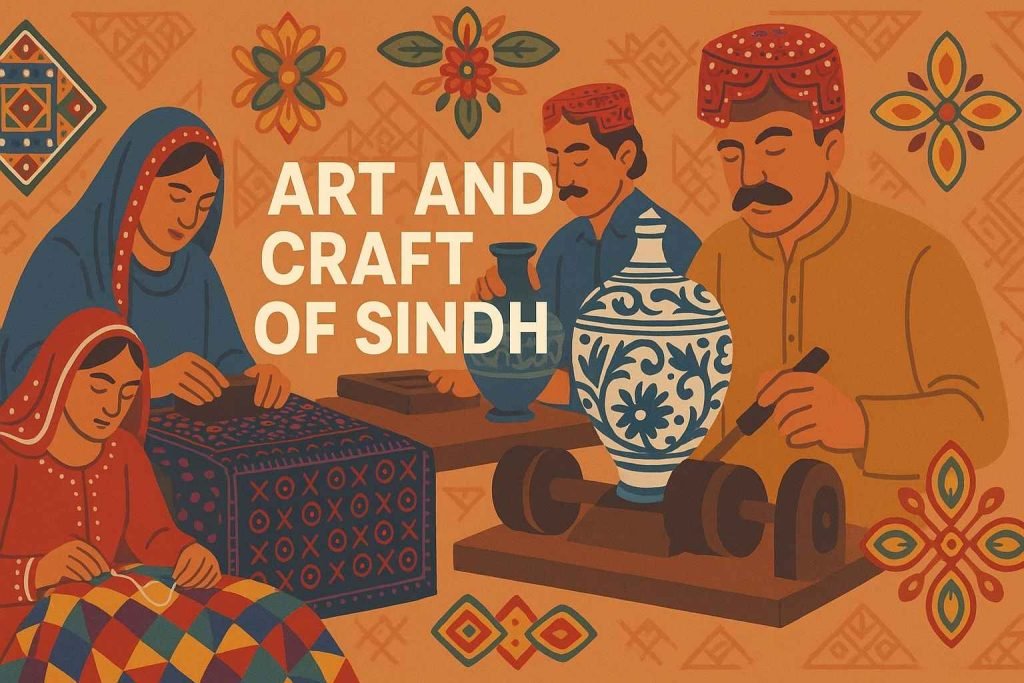

Agree: Sindh is often called the cultural heart of Pakistan, and for good reason. From the rhythmic beats of its folk music to the vibrant colors of its textiles, the province’s artistic traditions have inspired people for centuries.
Promise: In this guide, you’ll explore the world of the art and craft of Sindh — its historical roots, the iconic crafts that define it, and the techniques and symbols that keep it alive today.
Preview: We’ll journey through Sindh’s seven most celebrated crafts, discover the regions where they thrive, and see how modern artisans are preserving this priceless heritage. By the end, you’ll understand not just what these crafts are, but why they matter.
Table of Contents
Historical Foundations of Sindhi Art and Craft
Indus Valley Civilization Origins
The roots of the art and craft of Sindh stretch back over 5,000 years to the Indus Valley Civilization. Archaeological discoveries in Mohenjo-daro reveal evidence of pottery, beadwork, and textiles that continue to influence Sindhi crafts today. These early artisans used natural dyes, clay, and simple tools — laying the foundation for techniques that still survive.
Evolution Through Mughal and British Eras
During the Mughal period, Sindh’s crafts absorbed Persian and Central Asian influences. Intricate motifs, floral designs, and calligraphic patterns became part of Ajrak printing and Kashi tiles. Later, the British introduced industrial textiles, which challenged traditional methods but also pushed artisans to adapt and refine their work.
Post-Partition Cultural Preservation Efforts
After 1947, Sindh became a hub for cultural preservation in Pakistan. Institutions like the Sindh Small Industries Corporation (SSIC) and Sindh Culture Department were created to revive endangered crafts. Despite modernization, crafts such as Ralli quilts and lacquer work remain vital, connecting generations through their living heritage.
The Seven Pillars of Traditional Sindhi Art and Craft
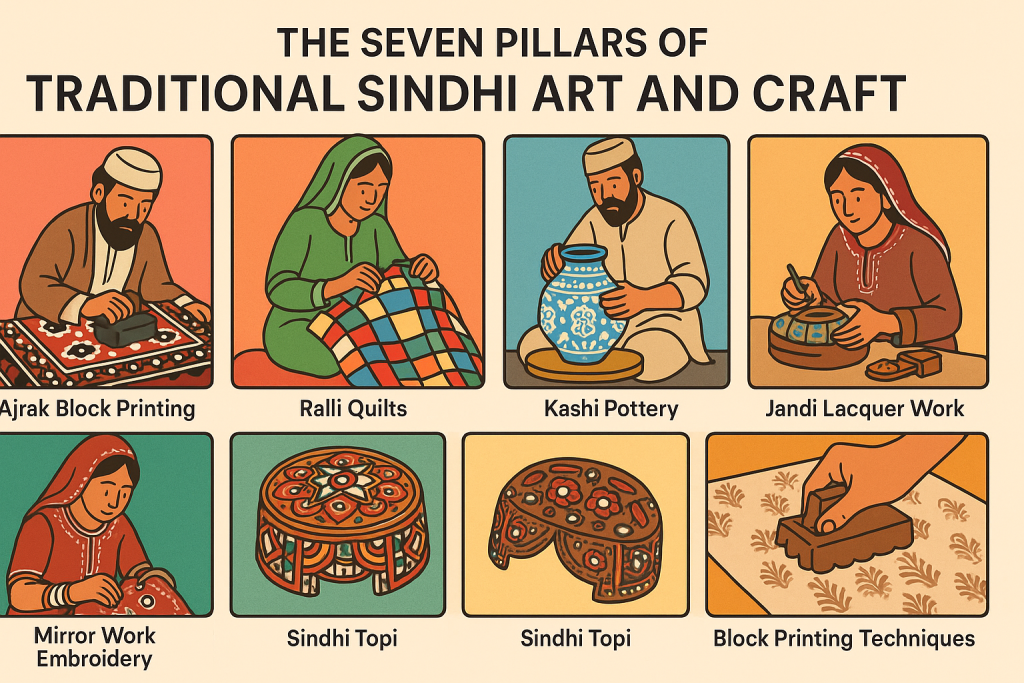

Ajrak Block Printing – The Crown Jewel of Sindhi Art and Craft
Ajrak is perhaps the most iconic symbol of Sindh. Using hand-carved wooden blocks and natural dyes, artisans create symmetrical patterns in indigo, red, and black. Each piece of Ajrak takes several weeks to complete, involving repeated washing, dyeing, and sun-drying. More than just a cloth, Ajrak represents dignity, identity, and centuries of craftsmanship.
Ralli Quilts – Geometric Poetry in Fabric
Ralli quilts are made by stitching together small, brightly colored pieces of fabric into bold geometric patterns. Traditionally, women in rural Sindh crafted these quilts for household use, but today they are celebrated as cultural art. Each Ralli design carries symbolic meaning, often representing harmony, protection, or celebration.
Quick Checklist: What Defines Authentic Sindhi Crafts?
- Handmade using traditional tools and methods
- Natural dyes and locally sourced materials
- Distinctive geometric and symbolic motifs
- Passed down through artisan families
Kashi Pottery – Blue Gold of Hala
Kashi, or glazed tile pottery, is one of Sindh’s most recognizable art forms. Originating in Hala, this craft features blue, turquoise, and white patterns that adorn mosques, shrines, and households across the province. The process involves molding clay, glazing with mineral-based colors, and firing in kilns — each piece reflecting both artistic mastery and spiritual symbolism.
Jandi Lacquer Work – Wooden Masterpieces
Jandi is the traditional lacquer work of Sindh, where wooden items such as boxes, trays, and furniture are decorated with vivid bands of color. Artisans apply multiple coats of lacquer, then polish to create a glossy finish. The craft is most prominent in Hala, where families have practiced it for generations, passing down both technique and design motifs.
Mirror Work Embroidery – Sparkling Heritage
Mirror work embroidery is a dazzling tradition where small pieces of reflective glass are stitched into fabric using colorful threads. This art form transforms clothing, home décor, and ceremonial items into glittering masterpieces. Historically, mirror work has been tied to celebrations, weddings, and festivals — symbolizing light, joy, and prosperity.
Sindhi Topi – Identity Through Craft
The Sindhi Topi is more than just a cap; it is a cultural emblem of pride and identity. Made with intricate embroidery and mirror embellishments, the Topi is worn on special occasions such as Sindhi Cultural Day. Its design varies across regions, but its symbolic role in representing Sindhi heritage remains constant.
Block Printing Techniques – Foundation of Sindhi Textile Art
Beyond Ajrak, block printing is widely used across Sindh to decorate fabrics. Craftsmen carve wooden blocks with floral or geometric patterns, dip them in natural dyes, and carefully stamp them onto cloth. Each layer must align perfectly, making the process both time-intensive and detail-oriented. This technique continues to inspire contemporary textile designers in Pakistan and beyond.
Regional Centers of Excellence in Sindhi Art and Craft
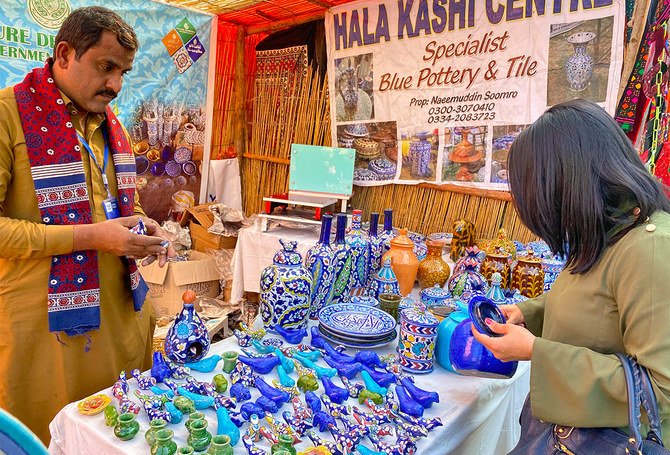

The beauty of Sindh’s crafts is closely tied to its regions. From Hala’s pottery to Thatta’s weaving traditions, each city and town contributes to the province’s cultural identity. Let’s explore where these traditions are strongest today.
Hala – The Cultural Capital of Craft
Hala is known as the beating heart of Sindh’s artisan culture. The city specializes in Ajrak block printing, Kashi pottery, and Jandi lacquer work. Visitors can explore entire neighborhoods where families continue to produce handmade items, often using the same tools and methods passed down for centuries.
Hyderabad’s Role in Contemporary Crafts
Hyderabad has become a hub for adapting Sindhi crafts to modern markets. Local workshops produce embroidered fabrics, jewelry, and decorative pieces that appeal to both domestic and international buyers. The city plays a key role in connecting rural artisans to global trade.
Thatta’s Historical Significance
Once a thriving capital of Sindh, Thatta is still known for weaving and embroidery traditions. Its artisans incorporate historical motifs inspired by the region’s monuments and Sufi shrines. These crafts preserve both cultural identity and a sense of continuity with Sindh’s past.
Techniques and Materials in Sindhi Art and Craft
Natural Dye Preparation Methods
Sindhi artisans rely heavily on natural dyes made from plants, minerals, and clay. Indigo is used for Ajrak, turmeric for yellow shades, and pomegranate rind for earthy browns. These eco-friendly dyes ensure sustainability while producing vibrant, long-lasting colors.
Hand-Spinning and Weaving Processes
Traditional weaving involves hand-spun cotton and wool, crafted on wooden looms. These looms require careful skill, as even the smallest error can disrupt intricate geometric patterns. The process not only creates durable fabrics but also sustains local farming communities that supply raw cotton and wool.
Clay Preparation and Firing Techniques
Potters in Sindh prepare clay by mixing local soils with water, kneading it until smooth, and shaping it on hand-spun wheels. The pottery is then dried and fired in wood-fueled kilns. The glaze, applied before firing, transforms into bright blues and whites — a hallmark of Kashi craftsmanship.
Cultural Significance and Symbolism
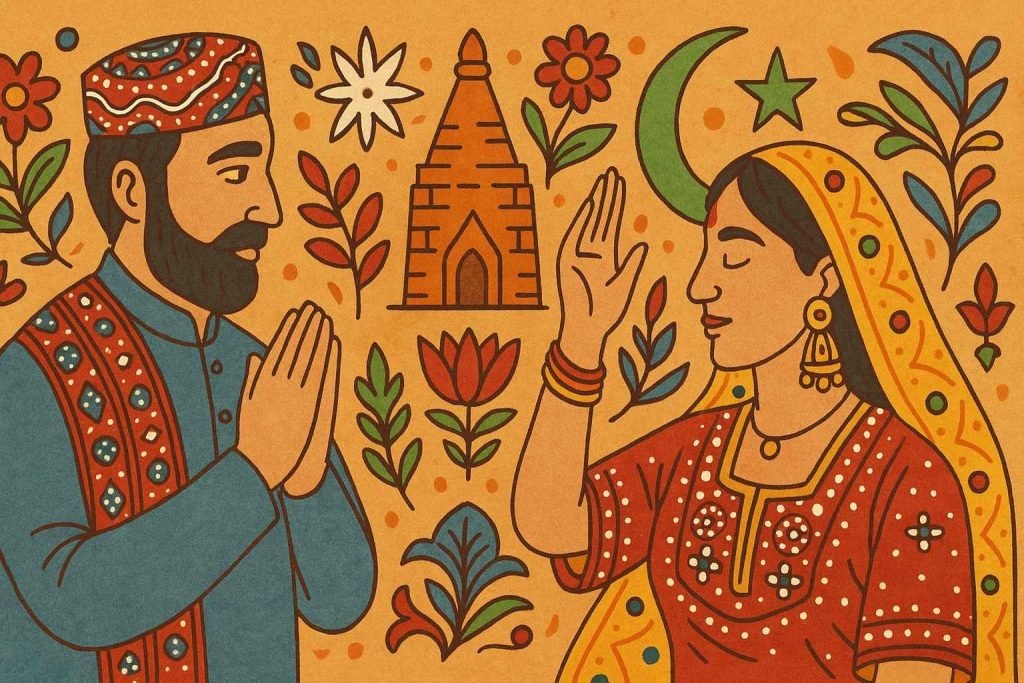

Religious and Spiritual Motifs
Many crafts feature patterns tied to spirituality. Ajrak motifs often represent the sun and stars, while pottery designs echo Sufi symbolism. These crafts carry deep meaning, often used in religious ceremonies or as offerings at shrines.
Social Identity and Status Markers
Historically, certain designs were linked to social classes or tribes. For example, embroidered shawls or embellished Topis indicated family status. Today, these items are worn with pride to showcase Sindhi heritage, bridging both tradition and modern identity.
Seasonal and Ceremonial Applications
Sindhi crafts are closely tied to life events. Ralli quilts are gifted during weddings, Ajrak scarves are exchanged as tokens of respect, and lacquered wood items are used in festive decorations. Each craft reinforces social bonds through shared culture.
FAQ on Art and Craft of Sindh
What makes Sindhi art and craft unique in South Asia?
The art and craft of Sindh stand out for their use of natural dyes, symmetrical motifs, and techniques rooted in the Indus Valley Civilization. Unlike mass-produced goods, each item is handmade, making it both unique and culturally meaningful.
How can I learn traditional Sindhi art and craft techniques?
Workshops in cities like Hala and Hyderabad often welcome visitors. Some cultural centers and universities also offer short courses, while online platforms provide documentaries and tutorials showcasing embroidery, block printing, and pottery-making.
Where can I buy authentic Sindhi art and craft pieces?
Authentic items are available at Sindh Small Industries Corporation (SSIC) shops, local markets in Hala and Hyderabad, and trusted online platforms that partner with artisans. Buyers should look for handmade quality and traditional dye use to avoid imitations.
What is the cultural significance of Ajrak in Sindhi art and craft?
Ajrak is more than a fabric — it symbolizes respect, pride, and identity. It is often presented as a gesture of honor at weddings, cultural gatherings, and academic ceremonies. Ajrak’s patterns reflect centuries of Sindh’s history and values.
How do I identify genuine vs. mass-produced Sindhi art and craft?
Genuine crafts usually have slight imperfections that prove they were handmade. Mass-produced versions, on the other hand, appear uniform. Buyers should also check for natural dye bleeding, artisan signatures, and provenance through trusted sellers.
Modern Preservation and Promotion
Government Initiatives and SITCO’s Role
The Sindh Small Industries Corporation (SSIC) and Sindh Culture Department have been instrumental in preserving traditional crafts. From setting up training centers to providing financial grants, these initiatives aim to empower artisans while ensuring the survival of Sindh’s cultural legacy.
Contemporary Adaptations and Market Trends
Today, Sindhi crafts are evolving with modern tastes. Designers integrate Ajrak motifs into fashion collections, Ralli patterns into home décor, and lacquer work into contemporary furniture. These adaptations not only preserve tradition but also make it relevant for new generations.
Digital Documentation and Cultural Tourism
With the rise of digital platforms, many crafts are now being documented online. Virtual workshops, social media campaigns, and cultural festivals showcase Sindh’s art to global audiences. Tourism initiatives also encourage visitors to experience workshops firsthand, bridging the gap between artisans and admirers.
Collecting and Appreciating Sindhi Art and Craft
Authentication Guidelines for Buyers
To ensure authenticity, buyers should check for hand-stamped or hand-stitched details, natural dye variations, and provenance certificates. Mass-produced items often lack depth in patterns and may use synthetic dyes instead of traditional ones.
Price Ranges and Value Factors
Prices vary depending on the craft and its complexity. An authentic Ajrak scarf may range from PKR 2,000 to PKR 10,000, while a handcrafted Ralli quilt can cost upwards of PKR 15,000. Factors such as age, rarity, and artisan reputation also influence value.
Care and Maintenance of Traditional Pieces
Preserving Sindhi crafts requires careful handling. Ajrak fabrics should be washed in cold water, lacquered wood items kept away from direct sunlight, and pottery cleaned gently to avoid cracks. With proper care, these crafts can last for generations.
Conclusion: Preserving Sindh’s Living Cultural Heritage
The art and craft of Sindh are more than decorative items — they are living stories of resilience, creativity, and identity. From Ajrak block printing to lacquer work, each craft reflects centuries of skill and cultural meaning. By supporting artisans, buying authentic pieces, and promoting cultural tourism, we ensure that this heritage continues to inspire future generations.
Call to Action: Explore authentic Sindhi crafts at cultural centers, visit artisan hubs like Hala and Hyderabad, or support verified online platforms that connect you directly to the makers. Every purchase helps preserve Pakistan’s living heritage.
About the Author
Author: ZunNurain Khalid — Travel & Tourism Specialist, Founder of ExploreX Pvt. Ltd., and advocate for sustainable tourism in Pakistan. With over a decade of experience in digital marketing and destination branding, ZunNurain has worked extensively on promoting Pakistan’s natural and cultural heritage.

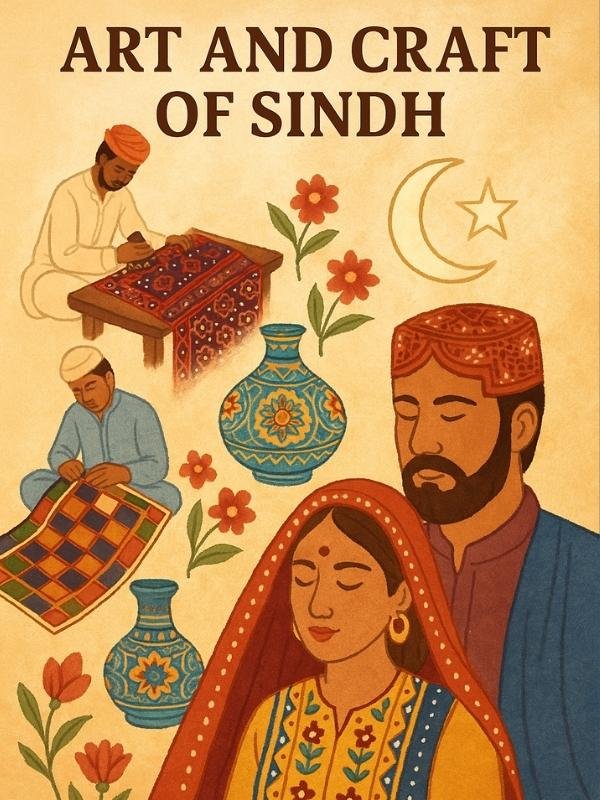
2 thoughts on “Art and Craft of Sindh: 7 Amazing Traditions That Inspire”